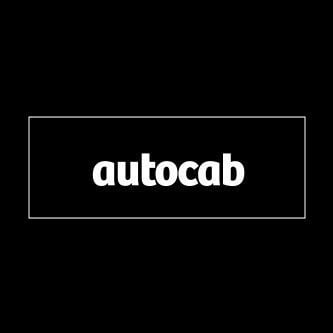Description

Autocab Dispatch System

InDrive
Comprehensive Overview: Autocab Dispatch System vs InDrive
Autocab Dispatch System and InDrive are both integral players in the transportation and ride-hailing market, but they serve different functions and target distinct markets.
a) Primary Functions and Target Markets
Autocab Dispatch System:
- Primary Functions: Autocab provides a cloud-based dispatch system for taxi operators. Its platform includes functions for booking rides, fleet management, customer relationship management, driver management, and analytics. The system often integrates with third-party applications to extend its capabilities, such as payment processing and navigation.
- Target Markets: Autocab primarily targets established taxi and private hire vehicle (PHV) companies. The system is designed to help traditional taxi services transition into the digital era, enabling them to compete with modern ride-hailing apps. It is particularly popular in markets like the UK, where local taxi services remain prevalent.
InDrive (formerly inDriver):
- Primary Functions: InDrive operates as a peer-to-peer ride-hailing service, allowing passengers and drivers to negotiate fares directly. This model is based on a real-time bidding system where drivers can accept, ignore, or bid on ride requests.
- Target Markets: InDrive targets both emerging and developed markets but finds particular traction in regions with less structured ride-hailing options. Its focus is on providing flexible and affordable transportation solutions for both drivers and passengers, especially in markets where price sensitivity is high.
b) Market Share and User Base
-
Autocab: As a B2B service, Autocab's market share is more regional, mainly concentrated where there is a high density of traditional taxi operators looking for digital solutions to compete with app-based ride-hailing services. Autocab has a strong presence in the UK and is expanding in Europe and other regions. It doesn't compete directly with consumer-facing apps like Uber but empowers traditional taxi services to do so.
-
InDrive: InDrive has seen rapid expansion since its inception, scaling up to serve millions of users across 45+ countries. It has a significant user base in CIS (Commonwealth of Independent States), Latin America, and parts of Africa and Asia. Its market share in these regions is bolstered by its appeal to cost-conscious users and drivers who prefer a more flexible pricing model.
c) Key Differentiating Factors
-
Business Model:
- Autocab: Offers a Software as a Service (SaaS) model tailored for business clients (taxi companies), helping them modernize their operations. It doesn't operate rides directly but supports those who do.
- InDrive: Provides a direct-to-consumer ride-hailing service with a unique peer-to-peer pricing model, distinguishing itself from the fixed pricing approach of other ride-hailing giants like Uber and Lyft.
-
Pricing Strategy:
- Autocab: Pricing is based on a subscription model for businesses, focusing on B2B transactions and partnerships.
- InDrive: Uses a fare negotiation system between drivers and passengers, allowing flexibility and often lower costs compared to competitors.
-
Technology and Integration:
- Autocab: Focuses on integrations with existing taxi systems and technologies, offering API support and third-party app integrations for payment and navigation.
- InDrive: Leverages a mobile app for both iOS and Android, emphasizing user-friendly features for fare negotiations and real-time updates.
-
Market Approach:
- Autocab: Serves to enhance existing taxi services, with no direct consumer-facing product, acting as a backend solution for taxi companies.
- InDrive: Directly engages consumers, focusing on under-served markets where traditional ride-hailing models are less established.
In summary, while both Autocab and InDrive operate within the transportation industry, their market roles, models, and target user bases differ significantly. Autocab concentrates on empowering traditional taxi services with advanced technology, whereas InDrive disrupts the standard ride-hailing market with its flexible, negotiation-based fare system.
Contact Info

Year founded :
Not Available
Not Available
Not Available
Not Available
Not Available

Year founded :
2020
Not Available
Not Available
Russia
http://www.linkedin.com/company/indrive-tech
Feature Similarity Breakdown: Autocab Dispatch System, InDrive
As of October 2023, both the Autocab Dispatch System and InDrive offer services in the ride-hailing and dispatch management sectors, but they serve slightly different markets and purposes. Here's a feature similarity breakdown for these platforms:
a) Core Features in Common
-
Ride Request and Booking: Both Autocab and InDrive allow customers to request rides through their respective platforms, with functionalities for immediate booking or scheduling rides for later.
-
Driver Management: Both systems include features to manage driver profiles, track driver locations, and assign rides based on proximity and availability.
-
Automated Dispatching: Both platforms utilize automated algorithms to match riders with drivers efficiently, aiming to minimize wait times and optimize routes.
-
GPS Navigation and Tracking: Real-time GPS tracking is integrated into both platforms to provide navigation assistance to drivers and tracking capability for riders.
-
Fare Calculation: Both services include systems for calculating fares based on distance, time, and potentially other factors such as demand surges or traffic conditions.
-
Payment Integration: Both platforms offer cashless payments through various payment gateways, including credit/debit cards and potentially digital wallets.
-
User Rating and Feedback: Both systems incorporate user feedback mechanisms, allowing riders to rate their experience and drivers to receive feedback.
b) User Interface Comparison
-
Autocab Dispatch System:
- Generally targets professional or enterprise users such as taxi companies, so the interface may include more complex tools for dispatchers and operators.
- More focused on functionality that supports a wide range of business sizes and needs, from small car services to large fleets.
- Interfaces may include dashboards for fleet management and detailed reporting tools.
-
InDrive:
- Primarily a consumer-facing app targeted at individual riders and drivers, emphasizing simplicity and ease of use.
- User interface is streamlined for speed and efficiency, focusing on minimal steps for booking and ride acceptance.
- More likely to include consumer-centric features such as ride preferences and personalized user settings.
c) Unique Features
-
Autocab Dispatch System:
- Business Management Tools: Includes advanced features for fleet management, driver performance analytics, and business reporting, catering to the needs of taxi companies and fleet operators.
- Customizable Modules: Offers various integrations and customization options, allowing businesses to tailor the system to their specific operational needs.
-
InDrive:
- Fare Negotiation: InDrive sets itself apart through its unique fare negotiation feature, where riders can propose a fare they are willing to pay, and drivers can accept, decline, or counter-offer. This feature aims to empower both riders and drivers in the pricing process.
- Localized Operations: Initially launched as a service in longer distances and regions less covered by major ride-hailing apps, InDrive often emphasizes localized operations and services.
- Simplified Model: Due to its peer-to-peer nature, InDrive sometimes adopts a less formal regulatory model, which can be appealing in markets with stringent regulations on taxi services.
Both platforms are designed to address different market segments and operational needs, with Autocab focusing more on the B2B aspect and fleet management, and InDrive providing a more consumer-centric, user-driven experience.
Features

Not Available

Not Available
Best Fit Use Cases: Autocab Dispatch System, InDrive
Autocab Dispatch System and InDrive are both prominent tools in the ride-hailing and transportation management industry, but they are designed for different types of use cases and business models. Here's how each might be best utilized:
Autocab Dispatch System
a) Best Fit Use Cases:
-
Taxi and Private Hire Companies:
- Medium to Large Fleets: Autocab is ideal for established taxi firms or private hire companies that manage medium to large fleets. Its comprehensive software offers features tailored to handle a high volume of bookings, live tracking, extensive reporting, and efficient driver dispatching.
-
Logistics and Delivery Services:
- For businesses involved in logistics, Autocab can manage the dispatch of delivery vehicles efficiently, optimizing routes and ensuring timely deliveries.
-
Corporate Transportation:
- Companies providing employee shuttle services or corporate transportation can benefit from Autocab’s ability to schedule rides, handle multiple bookings, and integrate with existing corporate systems.
-
Transport Network Companies:
- Startups or established businesses looking to operate a ride-hailing network can utilize Autocab’s scalable solutions to manage their operations and expand their reach.
Industry Verticals and Company Sizes:
- Industry Verticals: Transportation, logistics, and corporate travel.
- Company Sizes: Medium to large enterprises, particularly those seeking to scale operations efficiently.
InDrive
b) Preferred Use Cases:
-
Peer-to-Peer Ride-Hailing:
- Independent Drivers: InDrive is designed for scenarios where individual drivers wish to connect directly with riders, focusing on a peer-to-peer transactional model without the need for a centralized dispatch.
-
Price Negotiation Dynamics:
- InDrive allows passengers and drivers to negotiate fares, making it ideal in regions or cities where fare negotiation is culturally accepted and where dynamic pricing can be a competitive advantage.
-
Emerging Markets and Regions:
- In regions where smartphone penetration is high but access to traditional banking is limited, InDrive's model can be empowering for independent drivers looking for flexible income opportunities.
Industry Verticals and Company Sizes:
- Industry Verticals: Shared mobility services, ride-hailing.
- Company Sizes: Small to medium-sized operations, often driven by gig economy workers or startups looking to capitalize on non-traditional ride-sharing models.
Product Differentiation:
-
Autocab: Focuses on centralized dispatching, fleet management, and corporate integration. It's feature-rich and suited to companies that require robust infrastructure to manage complex transportation needs.
-
InDrive: Emphasizes flexibility, negotiation, and decentralization, making it an appealing choice for markets or operators who prioritize individual engagement and fare control.
Both products cater to different aspects of the transportation industry, allowing businesses to choose based on their specific operational needs, market conditions, and business models.
Pricing

Pricing Not Available

Pricing Not Available
Metrics History
Metrics History
Comparing teamSize across companies
Conclusion & Final Verdict: Autocab Dispatch System vs InDrive
When evaluating the Autocab Dispatch System and InDrive, several factors come into play, such as features, user experience, scalability, pricing, and support. Each system has its unique advantages and disadvantages, catering to different types of users and businesses.
Conclusion and Final Verdict
a) Best Overall Value
Choosing the best overall value between Autocab Dispatch System and InDrive depends largely on the specific needs of your business. For companies seeking a robust, feature-rich platform with extensive customization options and scalability, Autocab Dispatch System may offer superior value. However, for businesses that prioritize cost-effectiveness and a straightforward approach, InDrive might be the preferred choice.
b) Pros and Cons
Autocab Dispatch System
- Pros:
- Comprehensive features tailored for taxi and private hire companies.
- High level of customization to suit various business needs.
- Strong analytics and reporting capabilities.
- Integrates well with third-party services.
- Reliable customer support and training resources.
- Cons:
- Can be expensive, especially for small or medium-sized businesses.
- Might require a steeper learning curve due to its complexity.
- Implementation can be time-consuming.
InDrive
- Pros:
- Simple and user-friendly interface.
- Cost-effective, especially for startups and smaller businesses.
- Quick setup and easier integration.
- Flexible pricing model that can adapt to the business size.
- Cons:
- May lack some advanced features and customization found in comprehensive systems like Autocab.
- Limited scalability for rapidly growing businesses.
- Customer support might not be as responsive or detailed as competitors.
c) Recommendations for Users
- If your business is established, requires an advanced dispatch system with extensive features and analytics, and you have the resources to invest in a more complex solution, the Autocab Dispatch System would be the better choice.
- For new businesses, startups, or those who operate on a tighter budget and need a simpler, more straightforward dispatch solution, InDrive is likely to meet your needs effectively.
- Carefully consider the growth trajectory of your business. If you anticipate rapid expansion, investing in a scalable system like Autocab could save time and money in the long term.
- Both systems offer demos or trials; use these to get a practical feel for the user experience and ensure the system aligns with your operational needs before making a final decision.
Ultimately, understanding your business requirements and evaluating how each system addresses those needs will guide you to the best choice for maximizing value and ensuring efficient operations.
Add to compare
Add similar companies



